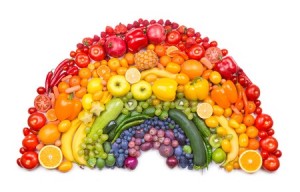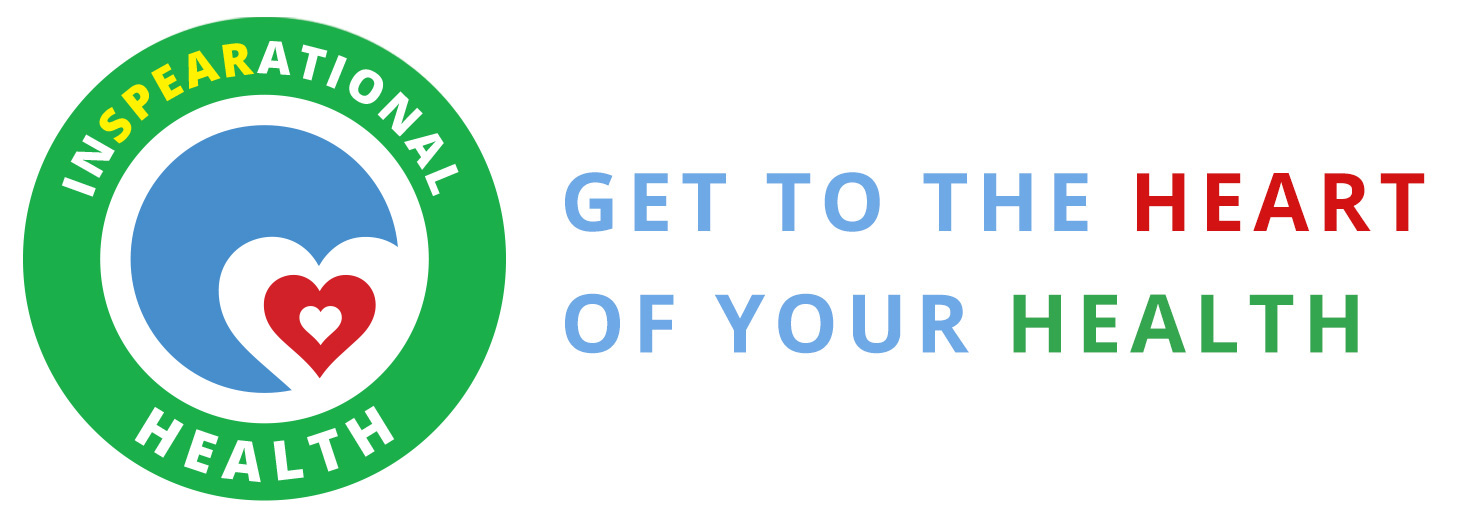I’ve talked about this before; however, I think it deserves attention again as we close out National Nutrition Month.
I assume you’ve looked at the label for a multi-vitamin at some point in time. There are A LOT of vitamins and minerals in them. While I personally take a multi-vitamin to help fill nutritional gaps, the fact is, we can get a lot of these micronutrients from our food.
 Plants also provide additional nutritional benefit in the form of phytonutrients, or phytochemicals. As a matter of fact, according to WebMD, plants offer more than 25,000 phytochemicals. And these phytonutrients offer various health benefits.
Plants also provide additional nutritional benefit in the form of phytonutrients, or phytochemicals. As a matter of fact, according to WebMD, plants offer more than 25,000 phytochemicals. And these phytonutrients offer various health benefits.
However, most people don’t eat enough variety to get the necessary vitamins and minerals, let alone a variety of these phytonutrients. It is easy to fall into a food routine and eat the same thing day-after-day. Unfortunately, that leads to nutritional gaps and has an impact on our health.
This infographic from Natural Healthy Concepts displays five color groups. Every color group offers different phytonutrients which offer different health benefits. Focus on eating one item in each color group every day and you will eat 5 servings of fruits and veggies. Better yet, here is a better idea to consider.
If you split the Purple/Blue into two colors and split the Yellow/Orange into two colors, you now have 7 color groups. Again, focus on eating one food from each color group daily and now you are getting 7 servings of fruits and vegetables. You are also getting a wide array of vitamins, minerals, and phytonutrients.
The information below is from Disabled World:
![]() Red Fruits & Vegetables – Nutrients include Lycopene, ellagic acid, Quercetin, and Hesperidin, to name a few. These nutrients reduce the risk of prostate cancer, lower blood pressure, reduce tumor growth and LDL cholesterol levels, scavenge harmful free-radicals, and support join tissue in arthritis cases.
Red Fruits & Vegetables – Nutrients include Lycopene, ellagic acid, Quercetin, and Hesperidin, to name a few. These nutrients reduce the risk of prostate cancer, lower blood pressure, reduce tumor growth and LDL cholesterol levels, scavenge harmful free-radicals, and support join tissue in arthritis cases.
 Orange & Yellow Fruit and Vegetables – Nutrients include Beta-carotene, zeaxanthin, flavonoids, lycopene, potassium, and vitamin C. These nutrients reduce age-related macula degeneration and the risk of prostate cancer, lower LDL cholesterol and blood pressure, promote collagen formation and healthy joints, fight harmful free radicals, encourage alkaline balance, and work with magnesium and calcium to build healthy bones.
Orange & Yellow Fruit and Vegetables – Nutrients include Beta-carotene, zeaxanthin, flavonoids, lycopene, potassium, and vitamin C. These nutrients reduce age-related macula degeneration and the risk of prostate cancer, lower LDL cholesterol and blood pressure, promote collagen formation and healthy joints, fight harmful free radicals, encourage alkaline balance, and work with magnesium and calcium to build healthy bones.
 Green Vegetables & Fruit – Nutrients include Chlorophyll, fiber, lutein, zeaxanthin, calcium, folate, vitamin C, calcium, and Beta-carotene. The nutrients found in these vegetables reduce cancer risks, lower blood pressure and LDL cholesterol levels, normalize digestion time, support retinal health and vision, fight harmful free-radicals, and boost immune system activity.
Green Vegetables & Fruit – Nutrients include Chlorophyll, fiber, lutein, zeaxanthin, calcium, folate, vitamin C, calcium, and Beta-carotene. The nutrients found in these vegetables reduce cancer risks, lower blood pressure and LDL cholesterol levels, normalize digestion time, support retinal health and vision, fight harmful free-radicals, and boost immune system activity.
![]() Blue & Purple Fruits and Vegetables – Nutrients include Lutein, zeaxanthin, resveratrol, vitamin C, fiber, flavonoids, ellagic acid, and quercetin. These nutrients support retinal health, lower LDL cholesterol, boost immune system activity, support healthy digestion, improve calcium and other mineral absorption, fight inflammation, reduce tumor growth, act as an anticarcinogens in the digestive tract, and limit the activity of cancer cells.
Blue & Purple Fruits and Vegetables – Nutrients include Lutein, zeaxanthin, resveratrol, vitamin C, fiber, flavonoids, ellagic acid, and quercetin. These nutrients support retinal health, lower LDL cholesterol, boost immune system activity, support healthy digestion, improve calcium and other mineral absorption, fight inflammation, reduce tumor growth, act as an anticarcinogens in the digestive tract, and limit the activity of cancer cells.
 White Fruits and Vegetables – Nutrients include Beta-glucans, EGCG, SDG, and lignans that provide powerful immune boosting activity. These nutrients also activate natural killer B and T cells, reduce the risk of colon, breast, and prostate cancers, and balance hormone levels, reducing the risk of hormone-related cancers.
White Fruits and Vegetables – Nutrients include Beta-glucans, EGCG, SDG, and lignans that provide powerful immune boosting activity. These nutrients also activate natural killer B and T cells, reduce the risk of colon, breast, and prostate cancers, and balance hormone levels, reducing the risk of hormone-related cancers.
Here is a chart from Disabled World that lists what fruits and veggies fall into which color groups.
